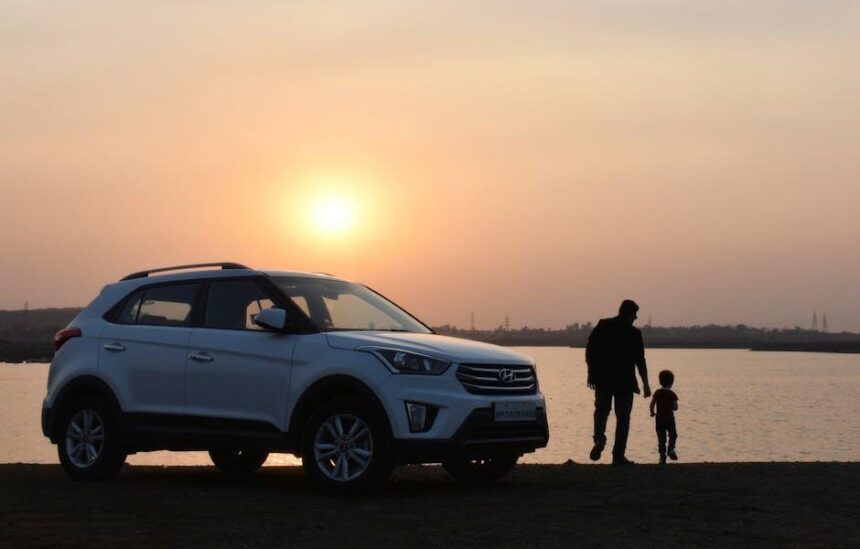Navigating the world of auto insurance can be a daunting task, especially for new drivers taking their first steps into vehicle ownership. With a myriad of options available, understanding the landscape is crucial to making an informed decision. Whether you’re a fresh graduate behind the wheel, a parent helping your teenager prepare for their driving journey, or someone embracing newfound independence, choosing the right auto insurance policy offers both protection and peace of mind. In this article, we’ll explore the top auto insurance options tailored specifically for new drivers in the USA, breaking down the essentials you need to consider to find the best fit for your needs and budget.
Understanding Coverage Types for New Drivers
When you’re a new driver, choosing the right auto insurance coverage can feel overwhelming. Understanding the various types of coverage available is essential for making informed decisions that fit your needs and budget. Here’s a breakdown of the key coverage types you should consider:
- Liability Coverage: This is mandatory in most states. It covers damages to other people’s property and medical expenses if you’re at fault in an accident.
- Collision Coverage: This covers damages to your vehicle from a collision with another vehicle or object, regardless of fault.
- Comprehensive Coverage: This protects against non-collision incidents, such as theft, vandalism, or natural disasters.
- Uninsured/Underinsured Motorist Coverage: This offers protection if you’re involved in an accident with a driver who lacks adequate insurance.
- Personal Injury Protection (PIP): This covers medical expenses for you and your passengers, regardless of fault, and may also include lost wages.
| Coverage Type | Description | Importance for New Drivers |
|---|---|---|
| Liability Coverage | Covers bodily injury and property damage to others. | Essential to protect yourself from high costs in case of an accident. |
| Collision Coverage | Covers your vehicle’s damages from accidents. | Important if you have a new or valuable car. |
| Comprehensive Coverage | Covers damages not involving collisions. | Recommended for added peace of mind against theft and natural dangers. |
| Uninsured/Underinsured Motorist Coverage | Covers costs from accidents with uninsured drivers. | Crucial for financial protection as accidents can happen with uninsured drivers. |
| Personal Injury Protection | Covers medical expenses and lost wages. | Useful for new drivers who might not have health insurance. |
As you begin your journey as a driver, evaluating these coverage types will help you create a comprehensive insurance policy tailored to your personal circumstances. Remember, compare quotes from various insurers and consider bundling policies to potentially lower your premium costs.

Exploring Budget-Friendly Premiums and Discounts
When it comes to finding the right auto insurance, new drivers often feel overwhelmed by the options available. However, understanding budget-friendly premiums and available discounts can significantly ease your financial burden and help you make informed choices.
Many auto insurance providers in the U.S. offer discounted rates for various reasons, making it crucial to explore these options. Here’s a look at some of the key discounts and ways to keep your premiums low:
- Good Student Discount: Many insurers provide discounts for young drivers who maintain good grades in school. This encourages safe driving habits.
- Safe Driver Discounts: If you have a clean driving record, you may qualify for a loyalty discount or a rewards program that reduces your rates.
- Bundling Policies: Consider bundling your auto insurance with other policies, such as homeowners or renters insurance, to save on overall premiums.
- Low Mileage Discounts: If you drive less than the average American, you may be eligible for a low mileage discount, as less driving equates to lower risk.
- Safety Features: Cars equipped with advanced safety features, such as anti-lock brakes, airbags, and anti-theft devices, can help reduce insurance premiums.
- Defensive Driving Courses: Completing a state-approved defensive driving course can often lead to discounts on your policy.
- Membership Discounts: Certain organizations, like AAA or military associations, may offer exclusive discounts to their members.
Here’s a simple table showcasing some of the top insurers and the average discounts they offer:
| Insurance Provider | Average Discount Offered |
|---|---|
| State Farm | Up to 25% for good students |
| Geico | Up to 15% for bundling |
| Progressive | Up to 30% for safe drivers |
| Allstate | Up to 20% for new cars with safety features |
| Liberty Mutual | Up to 12% for defensive driving course completion |
Additionally, it’s wise to compare quotes from multiple providers to find the best deal. Online tools and comparison websites can make this process easier and help you find the most affordable premiums tailored to your needs.
Taking the time to research and utilize available discounts can lead to substantial savings, freeing up more of your budget for other priorities as you start your driving journey.

Evaluating Customer Service and Claims Process
When selecting an auto insurance provider, understanding their customer service performance and claims process is crucial for new drivers. Efficient support and a smooth claims experience can significantly ease the stress that often accompanies auto accidents or damage.
Customer Service Evaluation:
- Availability: Check if the customer service team is accessible 24/7. Some providers, like Amica, offer support during extended hours on weekdays and limited hours on weekends, ensuring assistance is available when you need it most.
- Contact Options: A variety of communication channels, including phone support, live chat, and email, enhances customer experience. Providers like Nationwide have dedicated lines for different inquiries, which can facilitate quicker resolution.
- Online Tools: An intuitive website and user-friendly mobile app are essential for managing your policy, filing claims, and accessing support. Easier navigation can help you handle things independently when needed.
Claims Process Assessment:
- Filing Claims: Look for insurers that offer a straightforward claims process. Some companies allow you to file claims online or via an app, streamlining what can often be a complicated experience.
- Claims Handling Time: Assess the average time it takes for claims to be processed. Insurers with speedy claims turnaround can alleviate anxiety after an accident.
- Claims Transparency: A provider that keeps you informed during the claims process through regular updates can enhance peace of mind, ensuring you understand every step of the procedure.
| Insurance Provider | Customer Service Hours | Contact Methods | Claims Process Ease |
|---|---|---|---|
| Amica | Weekdays: 6 a.m. – 10 p.m. ET, Weekends: 7 a.m. – 8 p.m. ET | Phone, Email, Live Chat | Online Claims Filing Available |
| Nationwide | 24/7 Support | Multiple Dedicated Phone Lines, Email | Easy Online Claims Process |
In conclusion, assessing customer service and the claims process is vital for new drivers selecting auto insurance. By choosing providers with strong support systems and efficient claims handling, you can focus more on enjoying the drive and less on the worries of what lies ahead.

Navigating State-Specific Requirements and Options
Navigating the world of auto insurance can be a daunting task for new drivers, especially when considering the various state-specific requirements and options available. Each state in the U.S. has its own laws regarding car insurance, and it’s crucial to understand these before hitting the road.
Every state mandates a minimum level of auto insurance coverage, which can differ significantly. Here are some key aspects to consider:
- Mandatory Coverage Types: Most states require at least a base level of liability coverage, which protects you if you cause an accident. Additionally, some states may require personal injury protection (PIP) or uninsured motorist coverage.
- State-Specific Limits: The amount of coverage you need can vary. For example, in California, the minimum liability coverage is $15,000 for injury or death per person, while in Texas, it’s $30,000 for injuries.
- Additional Requirements: States like New York require additional coverage requirements, such as PIP, which pays for medical expenses regardless of who is at fault.
- Penalties for Non-Compliance: Driving without the required insurance can lead to hefty fines, license suspension, or even legal penalties.
Understanding these factors ensures that you not only comply with the law but also protect yourself effectively. Here’s a simple table to compare the minimum liability insurance requirements across a few select states:
| State | Minimum Bodily Injury Liability | Minimum Property Damage Liability |
|---|---|---|
| California | $15,000 per person | $5,000 |
| Texas | $30,000 per person | $25,000 |
| New York | $25,000 per person | $10,000 |
| Florida | $10,000 (PIP) | $10,000 |
Beyond the legal necessities, new drivers should also explore additional coverage options to enhance their protection:
- Comprehensive Coverage: This protects against non-collision-related incidents such as theft, vandalism, or natural disasters.
- Collision Coverage: This helps pay for damages to your vehicle after a collision, regardless of fault.
- Discounts for Safe Driving: Many insurers offer significant discounts for new drivers who maintain a clean driving record.
There are also resources to assist in finding the best options tailored to your needs. Websites like U.S. News and NerdWallet provide comparative insights into different providers and their offerings based on user reviews and expert assessments, making the search easier.
In summary, understanding state-specific requirements and available options not only ensures compliance but also empowers you to make informed choices about your auto insurance coverage. This approach will lead to greater peace of mind as you navigate the roads as a new driver.

In Retrospect
As we conclude our exploration of the top auto insurance options for new drivers in the USA, it’s clear that navigating this crucial aspect of car ownership doesn’t have to be daunting. With various companies offering tailored coverage and competitive rates, new drivers can find policies that fit their unique needs and budgets. Remember, it’s essential to compare quotes and consider the benefits that best align with your driving habits. By making informed choices, you can embark on your driving journey with confidence, knowing you have the right protection in place. Safe travels and happy driving!














